WWII Creative Activity -- Writing and Producing a Newspaper
- Kellie Hayden
- Categories : Teaching middle school history
- Tags : Teaching middle school grades 6 8


Class Project
Goal: Students will create a World War II-era newspaper as a class project. Each person will write a news story or create a cartoon on a
political issue of the times. For extra credit, students can create advertisements for items that were popular during that time period.
Materials Needed: Computers to research newspapers of the time, to type a news story and to lay out the newspaper in Microsoft Word by using the newsletter templates.
Steps for Creating a Class Newspaper
Step 1 – Share examples of newspapers from the WWII time period. Students can see how newspapers changed from the beginning of the war till its end at the York town Square site . This can also give them ideas for political cartoons, advertisements, and news stories.
Step 2 – Teach basic news writing . The link provided has tips for teaching students to write a basic news story. Make sure students learn how to write strong leads .
Choose Topic for News Story
Step 3 – Choose a topic from the time period and research it using the Internet, history books and/or library. A history teacher can suggest a list of individual topics or students can research one of the following broad topics to find a story topic:
- pacts & conferences
- famous leaders
- weapons and bombs
- theaters of war
Step 4 - - Select a small group of students to do the layout of the newspaper. It is best to limit it to three to four students. These editors will take the final copies of the stories that have been typed and place them in the newsletter.
Write News Story
Step 5 -- Students need to write a draft of their story. The students should describe the event, person or topic well in a news story format. It is best if students peer edit as well. They should check for use of the news story format, grammar and content.
Step 6 – Students need to type their final copy and single space. This needs to be saved on a server where the editors have access to the files, or students need to store their stories on a jump drive or disk.
Design Layout for Newspaper
Step 7 – The editors need to take all of the files and layout the newspaper. Use the Microsoft Word templates to make the newspaper regular copy paper size so that it can be copied easily and stapled. It is also great if clip art can be added to the newspapers. Take note of the example newspapers that students researched earlier.
Step 8 - - After the teacher has reviewed the final copy of the newspaper, give every student a copy of the class project.
Tip : If you are using all parts of the WWII unit, these newspapers can be “sold” during the USO.
This is a fun project that can teach the basics of news writing and incorporates a WWII research project. In addition, the newspaper will be a keepsake for many students. Parents and grandparents will enjoy viewing the papers as well.
Resources for newswriting:
Newswriting basics , from McGraw-Hill Education.
Reporting basics , from Reuters Handbook of Journalism
This post is part of the series: World War II Creative Activities
A four part series of lessons on how to integrate social studies and language arts with the study of World War II. The lessons use many of Howard Gardner’s Multiple Intelligences.
- Persona Journals for World War II
- Lesson Plan: Recreating A WWII Era USO
- Writing and Producing a Newspaper for the WWII Time Period
- WWII Creative Actitivies: Literary Analysis
The New York Times
The learning network | historic headlines: world war ii.

Historic Headlines: World War II

This week is the anniversary of the beginning – and, arguably, the end – of World War II, which began on September 1, 1939, and ended virtually exactly six years later.
In commemoration, below are links to nearly 40 original New York Times front page images and articles reporting on World War II milestones, from our On This Day in History archive .
Ideas for using this collection include the following:
- Use one of the articles as primary source material for a document-based question (DBQ) assignment.
- Compare the news coverage with the content in the course textbook.
- Mine the articles to develop projects about the war, such as creating infographics or scrapbooks .
- Hold a debate on the question of when the war actually ended.
What other ideas do you have for using these articles with students? Please share them in the comment box below.
And for more resources, see our Teaching Topics page on the Holocaust and our World War II student crossword .
- September 1 In 1939, World War II began as Nazi Germany invaded Poland.
- June 22 In 1940, during World War II, Adolf Hitler gained a stunning victory as France was forced to sign an armistice eight days after German forces overran Paris.
- July 10 In 1940, during World War II, the 114-day Battle of Britain began as Nazi forces began attacking southern England by air. By late October, Britain managed to repel the Luftwaffe, which suffered heavy losses.
- September 7 In 1940, Nazi Germany began its initial blitz on London during World War II.
- December 29 In 1940, during World War II, Germany began dropping incendiary bombs on London.
- July 19 In 1941, British Prime Minister Winston Churchill launched his “V for Victory” campaign in Europe.
- March 11 In 1941, President Roosevelt signed into law the Lend-Lease Bill, providing war supplies to countries fighting the Axis.
- December 7 In 1941, Japanese warplanes attacked the home base of the United States Pacific fleet at Pearl Harbor, an act that led to America’s entry into World War II.
- December 8 In 1941, the United States entered World War II as Congress declared war against Japan, a day after the attack on Pearl Harbor.
- December 11 In 1941, Germany and Italy declared war on the United States; the U.S. responded in kind.
- December 26 In 1941, Winston Churchill became the first British prime minister to address a joint meeting of the United States Congress.
- March 17 In 1942, Gen. Douglas MacArthur arrived in Australia to become supreme commander of Allied forces in the southwest Pacific theater during World War II.
- June 11 In 1942, the United States and the Soviet Union signed a lend lease agreement to aid the Soviet war effort in World War II.
- November 12 In 1942, the World War II naval Battle of Guadalcanal began. The Americans eventually won a major victory over the Japanese.
- November 26 In 1942, President Roosevelt ordered nationwide gasoline rationing, beginning December 1.
- January 14 In 1943, President Roosevelt and British Prime Minister Winston Churchill opened a wartime conference in Casablanca.
- February 2 In 1943, the remainder of Nazi forces from the Battle of Stalingrad surrendered in a major victory for the Soviets in World War II.
- February 9 In 1943, the World War II battle of Guadalcanal in the southwest Pacific ended with an American victory over Japanese forces.
- May 12 In 1943, during World War II, Axis forces in North Africa surrendered.
- November 23 In 1943, during World War II, United States forces seized control of the Tarawa and Makin atolls from the Japanese.
- November 28 In 1943, President Roosevelt, British Prime Minister Winston Churchill and Soviet leader Josef Stalin met in Tehran during World War II.
- June 6 In 1944, the D-Day invasion of Europe took place during World War II as Allied forces stormed the beaches of Normandy, France.
- February 11 In 1945, President Roosevelt, British Prime Minister Winston Churchill and Soviet leader Josef Stalin signed the Yalta Agreement during World War II.
- February 19 In 1945, during World War II, some 30,000 United States Marines landed on the Western Pacific island of Iwo Jima, where they encountered ferocious resistance from Japanese forces. The Americans took control of the strategically important island after a month-long battle.
- April 1 In 1945, American forces invaded Okinawa during World War II.
- April 12 In 1945, Franklin D. Roosevelt, the 32nd president of the United States, died of a cerebral hemorrhage in Warm Springs, Ga., at age 63. Vice President Harry S. Truman became president.
- April 25 In 1945, during World War II, United States and Soviet forces linked up on the Elbe River, in central Europe, a meeting that dramatized the collapse of Nazi Germany.
- May 2 In 1945, the Soviet Union announced the fall of Berlin and the Allies announced the surrender of Nazi troops in Italy and parts of Austria.
- May 7 In 1945, Germany signed an unconditional surrender at Allied headquarters in Rheims, France, to take effect the following day, ending the European conflict of World War II.
- July 30 In 1945, the USS Indianapolis, which had just delivered key components of the Hiroshima atomic bomb to the Pacific island of Tinian, was torpedoed by a Japanese submarine. Only 316 out of 1,196 men survived the sinking and shark-infested waters.
- August 6 In 1945, the United States dropped an atomic bomb on Hiroshima, Japan, during World War II, killing an estimated 140,000 people in the first use of a nuclear weapon in warfare.
- August 9 In 1945, three days after the atomic bombing of Hiroshima, Japan, the United States exploded a nuclear device over Nagasaki, killing an estimated 74,000 people.
- August 14 In 1945, President Truman announced that Japan had surrendered unconditionally, ending World War II.
- August 25 In 1944, Paris was liberated by Allied forces after four years of Nazi occupation.
- September 2 In 1945, Japan formally surrendered in ceremonies aboard the USS Missouri, ending World War II.
- November 20 In 1945, 24 Nazi leaders went on trial before an international war crimes tribunal in Nuremberg, Germany.
- December 31 In 1946, President Truman officially proclaimed the end of hostilities in World War II.
Comments are no longer being accepted.
I find it incredible that events relating to the Soviet Union, a country which was crucial in defeating Nazi Germany, do not merit any mentioning. Bombining of London gets at least 3 mentionings; invasion of the Soviet Union – none. Battle of Stalingrad aparently less important compared to the arrival of a general in Australia, etc. I really would have expected more from a newspaper which claims preeminence when it comes to world news
the united states is the superpower of the world it doesnt come as a suprise to me that we held off japan as well as invading the exact same army
i wouldn’t like to be evacuated!!!!!!!!!!!!!!!!!!!!!
I dont know any one who would like it. When you are evacuated there is always gonna be somthin bad happinin. So,yeah, I aint carin for it eather.
One can learn a lot of information about WWII, however, were is the mention of the finding of the concentration camps and the atrocities that were taken place there? Or for that matter, General Eisenhower’s remarks when he saw the horror?
What's Next
- help_outline help
iRubric: World War 2 newspaper rubric
- newspaper, World War 2

World War II
Find Primary Sources and Online Teaching Activities.

Primary Sources
- WWII Posters
- Photographs
- Film & Audio Recordings
- U.S. Army "Newsmaps"
- The Homefront
- Women During WWII
- Code Talkers
- Tuskegee Airmen
- Nazism and the Third Reich
- Nazi Concentration Camps and Ghettos
- The Holocaust
- Genocide During the Holocaust
- Refugees and Immigration
- Pearl Harbor
- War in the Pacific
- Alaska and Aleut/Unangax̂ Internment
- Japanese-American Incarceration
- The Atomic Bomb
- The End of War & Surrender
- War Crimes and Trials
- American Military Cemeteries and Memorials
Teaching Activities
- Interpreting a Political Cartoon from the Eve of WWII
- Pearl Harbor Dispatch Analysis
- Analyzing Evidence of the Pearl Harbor Attack
- Two Versions of FDR's Infamy Speech
- Japanese American Incarceration During World War II
- The Night Before D-Day
- Letter to Truman about the Manhattan Project
- U.S. Policy and the Holocaust Refugee Crisis
- Analyzing a Writing Assignment by a Teenage Refugee in New York During World War II
- The SS Quanza and European War Refugees
- Analyzing Einstein's Citizenship Application
- Confronting Work Place Discrimination on the World War II Home Front
- Analyzing a Letter from Jackie Robinson: "Fair Play and Justice"
- Explore Primary Source Documents
- Discover Activities You Can Teach With
- Create Fun & Engaging Activities
csgo betting sites
Explore top csgo betting sites for a reliable and thrilling betting experience.
The National Archives
- All Education Programs
- Student Visits
- Distance Learning
- Professional Development
- National Archives Museum
- Presidential Libraries
- Archives.gov
- National Archives Foundation


- Teacher Opportunities
- AP U.S. Government Key Terms
- Bureaucracy & Regulation
- Campaigns & Elections
- Civil Rights & Civil Liberties
- Comparative Government
- Constitutional Foundation
- Criminal Law & Justice
- Economics & Financial Literacy
- English & Literature
- Environmental Policy & Land Use
- Executive Branch
- Federalism and State Issues
- Foreign Policy
- Gun Rights & Firearm Legislation
- Immigration
- Interest Groups & Lobbying
- Judicial Branch
- Legislative Branch
- Political Parties
- Science & Technology
- Social Services
- State History
- Supreme Court Cases
- U.S. History
- World History
Log-in to bookmark & organize content - it's free!
- Bell Ringers
- Lesson Plans
- Featured Resources
Lesson Plan: World War II
The Beginning of WWII in Europe
An archival film summarizes Germany's preparations for war leading up to its invasion of Poland on September 1st, 1939. It proved to be the act of aggression that touched off World War II in Europe.
Description
World War II was a worldwide conflict that took place from 1939 to 1945, beginning with Germany’s invasion of Poland on September 1, 1939. It involved most of the world powers at that time, and was fought between two major alliances, the Allies and Axis powers. It ended up as the deadliest war in history, and greatly impacted the modern world. In this lesson, students will learn about the causes and events of the war, as well as its significance today.
INTRODUCTION
As a class, view the following video clip and then discuss the questions below.
Video Clip: The Beginning of WWII in Europe (6:14)
Explain the effect of Germany taking the Sudetenland from Czechoslovakia.
What was the message of British Prime Minister Neville Chamberlain’s speech following the takeover of Czechoslovakia? What did Germany believe regarding this message?
Explain why the Germans and Russians agreed to a treaty.
Where was Danzig located and why was it considered important? What role did it play leading up to war?
What were Poland’s options for defense against Germany? What option did they choose? Why?
Describe the Nazi plan for the invasion of Poland.
- Describe the military differences between Poland and Germany.
Break students up into groups and have each group view the following video clips. Students should take notes using the handout provided, and then share their findings with the rest of the class.
HANDOUT: World War II Handout (Google Doc)
Video Clip: Franklin Roosevelt and World War II (5:50)
Curator Herman Eberhardt gave a tour of the Franklin D. Roosevelt Presidential Library and Museum and discussed President Roosevelt's role during World War II, including the decision to enter the war following the attack on Pearl Harbor.
Video Clip: The Battle of Midway (11:41)
Walter Borneman, and American historian and lawyer, provided a timeline of events that led to the World War II Battle of Midway.
Video Clip: The Battle of Iwo Jima (8:06)
World War II veteran Donald Mates describes his experience during the Battle of Iwo Jima.
Video Clip: D-Day Invasion (8:07)
A U.S. Office of War Information report on D-Day, the June 6, 1944, Allied invasion of Normandy during World War II.
Video Clip: Battle of the Bulge (9:59)
Leo Barron explains General Patton’s charge into the Belgian town of Bastogne to break up the German forces and help bring an end to World War II.
Video Clip: Executive Order 9066 and Japanese Americans (13:26)
Tammy Lau gave a tour of the “9066: Japanese American Voices from the Inside” exhibition and showed items from the Japanese American special collections at California State University, Fresno’s Henry Madden Library. The exhibition tells the story of the Japanese American experience and internment history in the area.
Video Clip: A Holocaust Survivor's Personal Account (8:18)
Holocaust survivor Morris Glass talks about his childhood life in Poland prior to World War II, and his family’s eventual forced migration to the Nazi monitored Jewish ghettos, and the infamous Auschwitz concentration camp.
Video Clip: The Decision to Use the Atomic Bomb (10:19)
Lt. Col. Grant Weller describes the decision of the United States to use the atomic bomb on Japan during World War II.
As a class, view the following video clip and discuss the questions below.
Video Clip: The End of World War II and the Beginnings of the Cold War (5:00)
This 1958 U.S. Army “Big Picture” film documents the events in Europe after the end of World War II that led to the Cold War and the formation of NATO. The tactics used by the Soviet Union to spread their influence in Turkey, Greece and Czechoslovakia are explained.
What was agreed upon between the Soviet Union and the western powers at Yalta and Potsdam?
How did the communists manipulate elections in eastern Europe?
Explain the differences between Russia and the western countries in terms of military preparedness.
What was the impact of this difference on the spread of communism in Europe?
- What tactics did the Soviet Union use in spreading their influence in Europe?
After viewing the video clips and reporting out to the entire class, have students write an essay (or similar culminating activity) that includes the following information. Students should cite specific examples from the videos and class discussion.
The causes of World War II and how it turned into a global conflict
The significance of the major battles of World War II
The impact of events, such as the Holocaust and Japanese internment
- The impact of the end of the war and how it led to the cold war.
Additional Resources
- Bell Ringer: President Roosevelt's "Day of Infamy" Address to Congress
- Bell Ringer: The Lead Up to the Japanese Invasion of China
- Bell Ringer: Hitler's Approach to the Press
- Video Clip: End of World War II Newsreel
- Adolf Hitler
- Appeasement
- Axis Powers
- Battle Of Iwo Jima
- Battle Of Midway
- Japanese Internment
- Sudetenland
Resources: Discussions and Assignments
Module 10 assignment: wwii propaganda poster.
For this assignment, you will review WWII propaganda posters and create a poster of your own.
Step 1 : Review the WWII propaganda posters in the National Archives and the FDR Presidential Library and Museum . Be sure to focus on those from World War II. Look for dates or other cues as to the time period. Look at the materials in light of our definition of propaganda from the American Historical Society as a work using words, images, music, or other forms of expression to acheive a desired result within a particular audience.
Step 2 : Revisit the sections of our reading on World War II and consider what ideas the government needed citizens to believe in or what actions it needed citizens to take in order to support the war effort.
Decide on a particular World War II-era audience to whom you will pitch an idea they should believe in or an action they should take to support the war effort.
Step 3 : Create your own propaganda poster. Locate a suitable image online that you can paste into the thread accompanied by no more than two lines of text.
You can search .gov archives and open-access Flickr, among other sources. (As always, keep anything you share in class somewhere near a PG-13 rating!). Any images used should be openly licensed or in the public domain (for example, listed as CC0, CC-BY, or CC-BY-SA). You can search for openly licensed images within Flickr or other platforms, but google also offers search tools to help you find images that allow for reuse. You can click “tools”, then the dropdown menu will come down and allow you to select “Creative Commons,” as shown in the screenshot below.

The combination of image and text should be persuasive, especially given that propaganda is often trying to get its intended audience to do something difficult or unconventional. Your image can be very simple—just copy/pasted, or, if you want to show off your photoshopping or meme-building skills, that works too. You can use a program of your choosing, such as Microsoft Word, PowerPoint, Photoshop, or programs such as Canva , Visme , Picktochart , Infogram , Easel.ly , Genially , Adobe Spark.
Step 4 : In a separate statement (200-250 words) that accompanies your poster (but isn’t framed within the image), explain in direct terms what result you were aiming for and at whom. What makes it propaganda? Where did you find a wartime need described in our reading that you could feature in your poster? Why did you think it was important for this need to be met?
- Module 10 Assignment: WWII Propaganda Poster. Authored by : Scott Barr for Lumen Learning. Provided by : Lumen Learning. License : CC BY: Attribution
- International edition
- Australia edition
- Europe edition
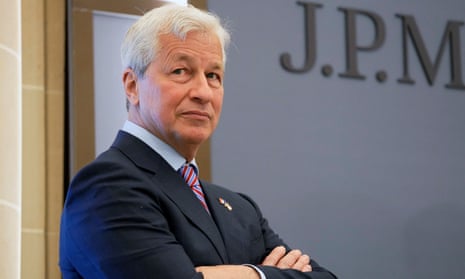
Global economic risks ‘could eclipse anything since second world war’, says JP Morgan boss
In annual letter to investors, Jamie Dimon warns ‘wars in Ukraine and Middle East could become far worse’
The boss of the US bank JP Morgan has warned that the world could be facing the most dangerous moment since the second world war, putting lives and economic growth at risk.
In his annual letter to investors , Jamie Dimon said the world had been “generally on a path to becoming stronger and safer” in recent years but had suffered a major reversal in February 2022 when Russia invaded Ukraine.
“When terrible events happen, we tend to overestimate the effect they will have on the global economy,” Dimon said. “Recent events, however, may very well be creating risks that could eclipse anything since world war II – we should not take them lightly.”
The Wall Street banking boss did not mention Israel’s assault on Gaza in recent months, but said the “abhorrent attack on Israel and ongoing violence in the Middle East” had also “punctured many assumptions about the direction of future safety and security, bringing us to this pivotal time in history”.
In a wide-ranging letter to investors covering everything from politics and artificial intelligence to interest rates, Dimon warned that the breakdown in international relations “may end up having virtually no effect on the world’s economy or it could potentially be its determinative factor”.
He added: “The ongoing wars in Ukraine and the Middle East could become far worse and spread in unpredictable ways. Most important, the spectre of nuclear weapons – probably still the greatest threat to mankind – hovers as the ultimate decider, which should strike deep fear in all our hearts.
“The best protection starts with an unyielding resolve to do whatever we need to do to maintain the strongest military on the planet – a commitment that is well within our economic capability.”
It follows similar warnings from the International Monetary Fund, which in December said the global economy was on the brink of a second cold war that could “annihilate” progress made since the collapse of the Soviet Union.
Gita Gopinath, the IMF’s first deputy managing director, said at the time that the world was at a “turning point” as tensions mounted between the most powerful nations, and that the accelerating fragmentation of the world economy into regional power blocs – centred around the US and China – risked wiping out trillions of dollars in global output.
“If we descend into cold war two, knowing the costs, we may not see mutually assured economic destruction. But we could see an annihilation of the gains from open trade,” she said.
Dimon warned that a surge in government spending – linked not only to higher military expenditure but also climate transition plans, healthcare costs and shifting global supply chains – could lead to “stickier inflation and higher rates than markets expect”.
JP Morgan, he said, already had contingency plans in place for US interest rates – which are now in a range of 5.25% to 5.5% – to rise higher than 8%, or fall as low as 2%.
after newsletter promotion
“We have ongoing concerns about persistent inflationary pressures and consider a wide range of outcomes to manage interest rate exposure and other business risks,” he added.
The IMF on Monday warned the world’s most powerful central banks against keeping interest rates high for too long.
The Washington-based fund said the Bank of England should be wary of keeping current high borrowing costs because of a higher proportion of UK homeowners on a fixed-rate mortgage than in some countries, which had weakened the impact of ratcheting up interest rates.
It comes after the Organisation for Economic Co-operation and Development, a member body including 38 of the world’s leading democratic economies, said food prices across the world’s richest nations rose in February at the slowest rate since before the Russian invasion of Ukraine .
It could help fuel several interest rate cuts this year, although analysts have become more cautious in recent weeks about the extent of any reductions.
- Jamie Dimon
- Global economy

JP Morgan puts more money aside for defaults amid cost of living crisis

World’s largest solar manufacturer to cut one-third of workforce

Talk of a soft landing for the global economy is premature – many dark scenarios are lurking

JP Morgan boss plays down risk of crisis after second biggest bank failure in US history

JP Morgan ready for more banking turmoil as profits jump 52%

Central banks must beat inflation before cutting interest rates, says OECD

JP Morgan sues ex-Barclays boss Jes Staley over ties to Jeffrey Epstein

Globalisation is not dead, but it is fading: ‘glocalisation’ is becoming the new mantra

JP Morgan investment bankers suffer 30% bonus cut as takeover deals slump

Oil prices hit $80 a barrel as fears grow over Red Sea disruption to trade
Most viewed.
Israeli military pulls troops from southern Gaza
The Israeli military says it has reduced the number of ground troops in the southern Gaza Strip following the conclusion of its monthslong operation in the city of Khan Younis, raising questions about the future of its offensive in the enclave amid pressure from the U.S. to reduce the war’s humanitarian toll.
In a statement on Sunday, the IDF said it was pulling its 98th commando division “to recuperate and prepare for future operations,” as Israeli army vehicles were seen heading to a base in southern Israel.
"The achievements made by the IDF’s Division 98 and its units, are extremely impressive," Minister of Defense Yoav Gallant said. "They have eliminated terrorists and destroyed terror targets including warehouses, weapons, headquarters, communication centers and more. Their activities enabled the dismantling of Hamas as a functioning military unit in this area.”
The Nahal Brigade and the 162nd Division remain in Gaza, which the IDF describes as “a significant force” that will continue to “operate in the Gaza Strip, and will preserve the IDF’s freedom of action and its ability to conduct precise intelligence based operations.”
An Israeli brigade is typically made up of a few thousand troops. On Saturday, four Israeli soldiers were killed in Khan Younis.
It was not clear from the IDF’s statement if the withdrawal constituted a planned rotation of the troops, or signaled a turning point in Israel’s strategy for its military offensive in Gaza.
In response to a clarification request from NBC News, the IDF said it can’t comment on the deployment of its forces for security reasons.
Michael Horowitz, the head of intelligence at Le Beck International, a security and risk management consultancy, said, “I think this is a turning point in the campaign in Gaza.”
“The IDF contingent in Gaza will be the lowest since the ground invasion started in late October last year, made of only two brigades along an axis that cuts Gaza into two,” Horowitz said. “Essentially, this means the IDF is probably moving to a more long-term counterterrorism campaign of more target raids. This is something the U.S. had been asking for months.”
The move also does not appear to be a simple troop rotation, Horowitz said, as no troops are entering southern Gaza to replace the forces being pulled out.
“Operations in Khan Younis also appear to have been completed, and there is no logic in replacing troops in southern Gaza unless Israel launches a new offensive, against Rafah for instance,” he said, adding that Israel has been waving the threat of such an offensive, but has encountered a lot of pushback.
“The Gaza war is entering a new phase, one that will still last long, but may be of lesser intensity,” he added.
The National Security Council's John Kirby said Sunday "it's hard to know exactly what [the troop reduction] tells us."
"It is really just about rest and refit for these troops that have been on the ground for four months, and not necessarily that we can tell, indicative of some coming new operation for these troops," Kirby said on ABC's This Week.
A ground offensive in Rafah, Gaza’s southernmost city, which is sheltering some 1 million people, has become an increasingly contentious point with the U.S., Israel’s strongest ally. Last month, President Joe Biden suggested that an invasion of Rafah was a qualified red line . And last week, sources said a meeting about Israel’s plans to evacuate the city erupted into yelling , as the U.S. criticized Israel’s plans as insufficient.
The timing of the announcement raises questions about whether it was in response to a pronounced change in rhetoric from the United States, following the killing of seven aid workers with World Central Kitchen last week, among them a U.S.-Canadian dual national.
In a call Thursday in the aftermath of the killings, which have sparked international condemnation, Biden told Israeli Prime Minister Benjamin Netanyahu that U.S. policy going forward would hinge on Israel immediately addressing civilian harm and reducing humanitarian suffering.
Kirby on Sunday reiterated that there shouldn’t be a ground invasion in Rafah and said that too many aid workers have been killed in the Israel-Gaza conflict.
It also comes amid mounting international pressure for a cease-fire, and ongoing negotiations for a hostage deal. Hamas has sent a delegation to join talks in Cairo on Sunday, with CIA Director Bill Burns also expected to take part.
In comments to Israel’s war Cabinet on Sunday, Netanyahu did not directly address the withdrawal, nor did he appear ready to stand down, despite growing international isolation .
“I made it clear to the international community: There will be no cease-fire without the return of abductees. It just won’t happen,” Netanyahu said, adding that Israel intends to continue fighting into Rafah.
At a time of increased tensions, he also connected Hamas’ Oct. 7 attacks to Iran, as well as the widening hostilities with Hezbollah, the Houthis, and militias in Iraq and Syria. The U.S. has expressed concern that Iran could strike targets in Israel in retaliation for the killing of several top Iranian officials in the bombing of its embassy in Damascus last week.
“Our war is ongoing,” Netanyahu said.
Meanwhile, the withdrawal has allowed Palestinians to move into areas that had previously been restricted by Israeli forces, with the Palestinian Red Crescent Society reporting that the departure of the IDF troops from the center of Khan Younis has allowed it to retrieve the body of one of its staff, who the group said had been killed during the siege on Khan Younis’ Al-Amal Hospital.
Sunday marks six months since the Hamas-led attack on Israel on Oct. 7 that killed more than 1,200 people and has led to Israel’s deadly offensive in the Gaza Strip, which has killed more than 33,000 and sparked a humanitarian crisis that has brought an estimated 1 million people to the brink of famine .
Yuliya Talmazan is a reporter for NBC News Digital, based in London.
world war 2 assignment
All Formats
Resource types, all resource types.
- Rating Count
- Price (Ascending)
- Price (Descending)
- Most Recent
World war 2 assignment

Atomic Bombing of Japan - Source Analysis Questions / Assignment with Key ( WWII )

Analyzing Propaganda from World War Two (WW2) - Lesson, PowerPoint, Assignments
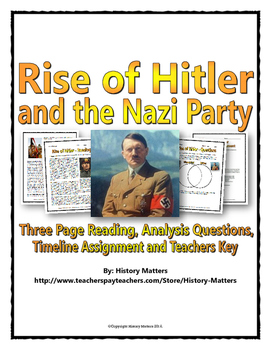
Hitler and Nazi Rise to Power - Reading / Questions / Timeline Assignment ( WWII )

World War Two Causes (Source & Cartoon Analysis / Questions / Assignments ) WWII
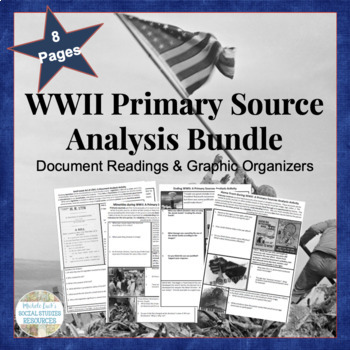
WWII BUNDLED SET Primary Source Analysis Assignment Handouts US History WW2

World War 2 : Who's Who and What's What Assignment

- Word Document File
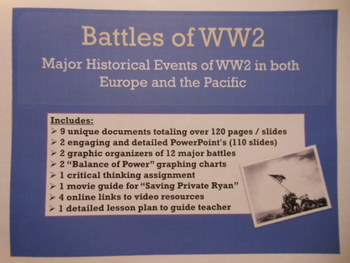
Battles of World War Two (WW2) - PPT's, Charts, Assignment , etc. (D-Day, etc.)
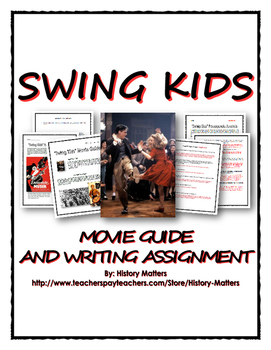
Swing Kids - Movie Guide, Assignment and Key ( World War II )

V for Vendetta - Movie Guide and Assignments with Key ( WW2 and Totalitarianism)

CHC2D: PowerPoints and Assignments - Canada, WW1, WW2 , Cold War

US Propaganda in World War II (WWII)-- Lesson, activity and writing assignment


World War Two (WW2) - Mapping Assignment

World War II Assignment -13 Parts
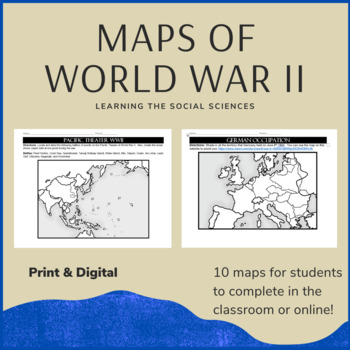
World War II Map Assignments : In-Person or Distance Learning Online

Bundle: Home Front During WWII - Reading Assignments , PPT, DBQs/Primary Sources

Unsung Heroes of World War II Article & Question Bundle (6 WORD Assignments )

World War II Worksheet Packet (19 Assignments on 45 Topics)

Tanks of World War II (5 PDF Assignments )
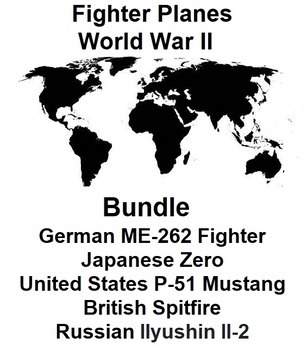
Fighter Planes of World War II (5 PDF Assignments )
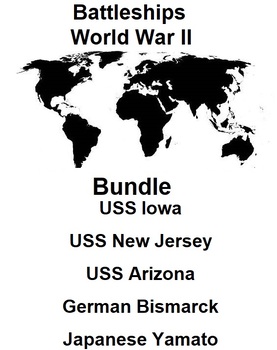
Battleships of World War II (5 PDF Assignments )
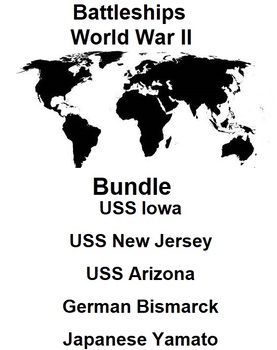
Battleships of World War II (5 Word Assignments )

Fighter Planes of World War II (5 Word Assignments )
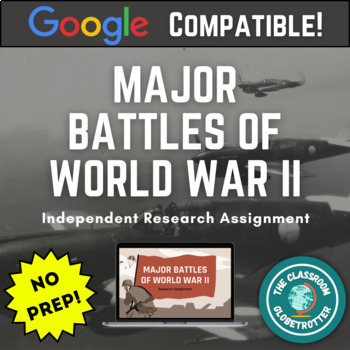
Major Battles of World War II - U.S. and World History Research Assignment

- Google Slides™
- Easel Activity
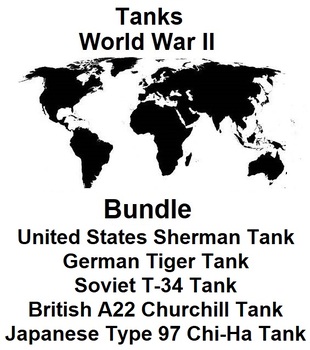
Tanks of World War II (5 Word Assignments )
- We're hiring
- Help & FAQ
- Privacy policy
- Student privacy
- Terms of service
- Tell us what you think
- Election 2024
- Entertainment
- Newsletters
- Photography
- Personal Finance
- AP Investigations
- AP Buyline Personal Finance
- Press Releases
- Israel-Hamas War
- Russia-Ukraine War
- Global elections
- Asia Pacific
- Latin America
- Middle East
- Election Results
- Delegate Tracker
- AP & Elections
- March Madness
- AP Top 25 Poll
- Movie reviews
- Book reviews
- Personal finance
- Financial Markets
- Business Highlights
- Financial wellness
- Artificial Intelligence
- Social Media
German troops arrive in Lithuania, their first long-term foreign deployment since World War II
The German government sent a combat-ready and independently capable combat unit to be deployed in Lithuania on Monday. The brigade should be operational by 2027, German news agency dpa reported. A permanent presence of around 4,800 soldiers and around 200 civilian Bundeswehr — or German army — members, who can bring their families with them, is planned. (AP video shot by Fanny Brodersen/Production: Kerstin Sopke)
German Army Chief Lt. Gen. Alfons Mais listens to a question during a media joint conference with Lithuanian Chief of Defence Gen. Valdemaras Rupsys and Lithuanian Defense Minister Laurynas Kasciunas as members of the Headquarters initial command element of the Bundeswehr’s 45th Brigade Lithuania arrival by plane at a airport in Vilnius, Lithuania, Monday, April 8, 2024. Germany has made a commitment to deploy a heavy brigade with three maneuver battalions and all necessary enablers, including combat support and provision units, to Lithuania. In total, approx. 5 thousand German military and civilian personnel are expected to move to Lithuania with families in stationing the Brigade. (AP Photo/Mindaugas Kulbis)
- Copy Link copied
German Army Chief Lt. Gen. Alfons Mais, right, speaks during a media joint conference with Lithuanian Chief of Defence Gen. Valdemaras Rupsys and Lithuanian Defense Minister Laurynas Kasciunas as members of the Headquarters initial command element of the Bundeswehr’s 45th Brigade Lithuania arrival by plane at a airport in Vilnius, Lithuania, Monday, April 8, 2024. Germany has made a commitment to deploy a heavy brigade with three maneuver battalions and all necessary enablers, including combat support and provision units, to Lithuania. In total, approx. 5 thousand German military and civilian personnel are expected to move to Lithuania with families in stationing the Brigade. (AP Photo/Mindaugas Kulbis)
Lithuanian Defense Minister Laurynas Kasciunas speaks during a media joint conference with German Army Chief Lt. Gen. Alfons Mais and Lithuanian Chief of Defence Gen. Valdemaras Rupsys as members of the Headquarters initial command element of the Bundeswehr’s 45th Brigade Lithuania arrival by plane at a airport in Vilnius, Lithuania, Monday, April 8, 2024. Germany has made a commitment to deploy a heavy brigade with three maneuver battalions and all necessary enablers, including combat support and provision units, to Lithuania. In total, approx. 5 thousand German military and civilian personnel are expected to move to Lithuania with families in stationing the Brigade. (AP Photo/Mindaugas Kulbis)
German Bundeswehr soldiers of the Headquarters initial command element of the Bundeswehr’s 45th Brigade Lithuania arrive at an airport in Vilnius, Lithuania, Monday, April 8, 2024. Germany has made a commitment to deploy a heavy brigade with three maneuver battalions and all necessary enablers, including combat support and provision units, to Lithuania. In total, approx. 5 thousand German military and civilian personnel are expected to move to Lithuania with families in stationing the Brigade. (AP Photo/Mindaugas Kulbis)
German Army Chief Lt. Gen. Alfons Mais speaks during a media joint conference with Lithuanian Chief of Defence Gen. Valdemaras Rupsys and Lithuanian Defense Minister Laurynas Kasciunas as members of the Headquarters initial command element of the Bundeswehr’s 45th Brigade Lithuania arrival by plane at a airport in Vilnius, Lithuania, Monday, April 8, 2024. Germany has made a commitment to deploy a heavy brigade with three maneuver battalions and all necessary enablers, including combat support and provision units, to Lithuania. In total, approx. 5 thousand German military and civilian personnel are expected to move to Lithuania with families in stationing the Brigade. (AP Photo/Mindaugas Kulbis)
Lithuanian Chief of Defence Gen. Valdemaras Rupsys, right, and German Army Chief Lt. Gen. Alfons Mais pose with German Bundeswehr soldiers of the Headquarters initial command element of the Bundeswehr’s 45th Brigade Lithuania at airport in Vilnius, Lithuania, Monday, April 8, 2024. Germany has made a commitment to deploy a heavy brigade with three maneuver battalions and all necessary enablers, including combat support and provision units, to Lithuania. In total, approx. 5 thousand German military and civilian personnel are expected to move to Lithuania with families in stationing the Brigade. (AP Photo/Mindaugas Kulbis)
VILNIUS, Lithuania (AP) — Lithuanian leaders hailed a “historic event” as Germany on Monday began deploying troops in the Baltic country — a NATO member — marking the first time since World War II that German forces will be based outside the country on a long-term basis.
About two dozen soldiers arrived in Lithuania, laying the groundwork for a further 150 to join them later this year. The deployment is expected to be up to its full strength of 5,000 by the end of 2027.
“This is the first time that we have permanently stationed such a unit outside of Germany,” German Defense Minister Boris Pistorius said in Berlin at a farewell ceremony for the preliminary command of Germany’s Lithuanian brigade, according to German news agency dpa. Pistorius called it “an important day for the German army.”
In the Lithuanian capital, Vilnius, Defense Minister Laurynas Kasciunas said that the move was “a great example” for all the countries on NATO’s eastern flank, on the border with Russia and its ally, Belarus.
“We will create such a defense and deterrence architecture that no adversary from the east will even think about testing NATO’s Article 5,” he told reporters.
Article 5 on collective defense is at the heart of the 32-member North Atlantic Treaty Organization. It states that an armed attack against one or more of the members shall be considered an attack against all.
Some 4,800 soldiers and around 200 civilians with the German army will be stationed permanently in Lithuania, which is increasingly worried by its aggressive neighbors.
Under an agreement, Lithuania is preparing military bases for the German brigade to be deployed in this Baltic state bordering Russia’s Kaliningrad exclave to the west and Belarus to the east.
The German army, the Bundeswehr, has taken part in long-term operations abroad since the 1990s, first in the Balkans and then in combat operations in Afghanistan. At the moment, the Bundeswehr says German soldiers are deployed in Europe, Asia and Africa, as well as in the Mediterranean.
However, this is the first permanent standalone German deployment, not on rotation as part of a multinational force.
Kasciunas said the German brigade is expected to reach full operational capacity by 2027.
“For us, this means more effective deterrence of the enemy and even greater security. It is an example of exceptional leadership and commitment as we actually see NATO’s collective defence and unity at work,” Lithuania Chief of Defence Valdemaras Rupsys added.
Up to one-third of troops are expected to bring their family members, according to the Lithuanian Defense Ministry.
Pistorius said Germany “will do everything we can to equip the brigade as it needs to be equipped from the outset.”
Associated Press writer Kirsten Grieshaber in Berlin contributed to this report.
Hamas says it is studying cease-fire proposal after negotiators leave Cairo
Hamas is reviewing the latest cease-fire proposal presented by mediators, according to a statement released Tuesday, after negotiators left Cairo and a senior official said talks were “on hold.” Hamas criticized the proposal for not meeting Palestinian demands but said the group would nonetheless study it and respond. Israel’s foreign minister said Monday that the talks have reached a “critical point,” adding that “if matters work out, a large number of hostages will return home and, in stages, everyone.”
- Under U.S. pressure, Israel increases flow of aid to Gaza
- Blinken says aid to Gaza is ‘in progress,’ with warning to Israelis
- Germany defends arms exports to Israel during ICJ hearing
Here's what to know:
Here's what to know, live coverage contributors 12.

59 min ago 59 min ago
2 hours ago Bullet Key update 2 hours ago
3:42 p.m. EDT 3:42 p.m. EDT
2:16 p.m. EDT Bullet Key update 2:16 p.m. EDT
1:19 p.m. EDT 1:19 p.m. EDT
- Gaza is going hungry. Its children could face a lifetime of harm. April 4, 2024 Gaza is going hungry. Its children could face a lifetime of harm. April 4, 2024
- Inside the ruins of Gaza’s al-Shifa Hospital April 1, 2024 Inside the ruins of Gaza’s al-Shifa Hospital April 1, 2024
- Six months of the Israel-Gaza war: A timeline of key moments April 7, 2024 Six months of the Israel-Gaza war: A timeline of key moments April 7, 2024
9:17 a.m. EDT Bullet Key update 9:17 a.m. EDT
7:39 a.m. EDT Bullet Key update 7:39 a.m. EDT
3:01 a.m. EDT Bullet Key update 3:01 a.m. EDT
2:10 a.m. EDT 2:10 a.m. EDT
Israel-Gaza war
The Israel-Gaza war has gone on for six months, and tensions have spilled into the surrounding region .
The war: On Oct. 7, Hamas militants launched an unprecedented cross-border attack on Israel that included the taking of civilian hostages at a music festival . (See photos and videos of how the deadly assault unfolded ). Israel declared war on Hamas in response, launching a ground invasion that fueled the biggest displacement in the region since Israel’s creation in 1948 .
Gaza crisis: In the Gaza Strip, Israel has waged one of this century’s most destructive wars , killing tens of thousands and plunging at least half of the population into “ famine-like conditions. ” For months, Israel has resisted pressure from Western allies to allow more humanitarian aid into the enclave .
U.S. involvement: Despite tensions between Israeli Prime Minister Benjamin Netanyahu and some U.S. politicians , including President Biden, the United States supports Israel with weapons , funds aid packages , and has vetoed or abstained from the United Nations’ cease-fire resolutions.
History: The roots of the Israeli-Palestinian conflict and mistrust are deep and complex, predating the establishment of the state of Israel in 1948 . Read more on the history of the Gaza Strip .

Israel’s war on Gaza updates: Aid workers killed amid ‘man-made famine’
‘Indiscriminate killing’ of Gaza aid workers condemned worldwide as Israel says it launched an immediate ‘high-level’ investigation.
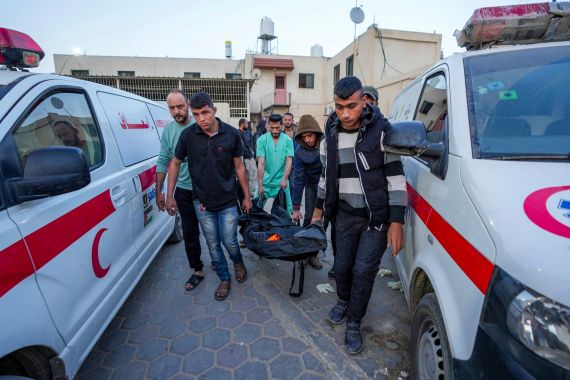
This live page is now closed. You can continue to follow our coverage of the war in Gaza here .
- International condemnation and calls for an urgent investigation are mounting after an Israeli air attack killed seven aid workers – six foreign nationals and a Palestinian – in Gaza.
- US-based aid group World Central Kitchen says the foreign aid workers killed in the “targeted Israeli strike” were nationals from Australia, Poland and the UK, as well as a US-Canadian citizen. Netanyahu has admitted the Israeli army was responsible for the strike.
- Iran has promised revenge after an Israeli attack on its consulate building in Syria’s Damascus killed several people, including top military commanders.
- At least 32,916 Palestinians have been killed and 75,494 wounded in Israeli attacks on Gaza since October 7. The death toll in Israel from Hamas’s October 7 attack stands at 1,139, with dozens still held captive.
That’s a wrap from us
Thank you for joining us for updates on everything related to Israel’s war on Gaza. This live page is now closed.
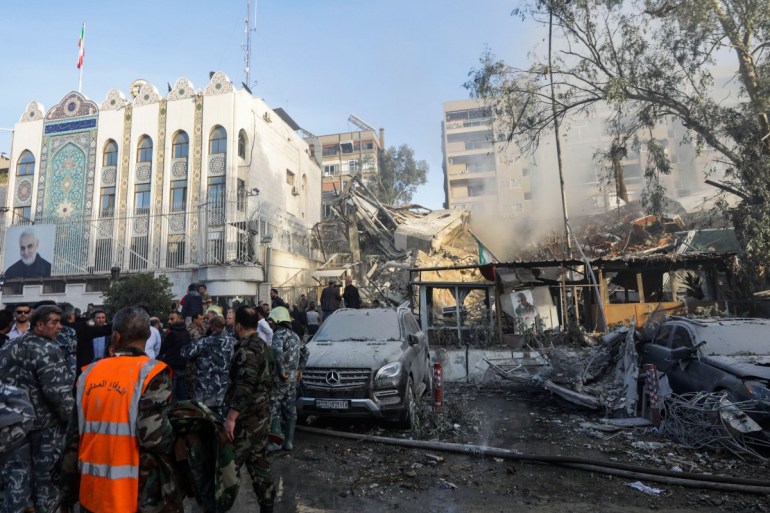
A look at what happened today
We will be closing this live page soon. Here’s a quick recap of today:
- International outcry and calls for an urgent investigation continue to mount after an Israeli air attack killed seven aid workers – six foreign nationals and a Palestinian – in Gaza.
- Police have clashed with protesters in Israel as hundreds marched towards Prime Minister Benjamin Netanyahu’s residence in Jerusalem.
- The UN Security Council held an emergency meeting over a strike that hit Iran’s consulate in Syria’s Damascus, with Tehran demanding condemnation of the attack from the UN.
- Reporters Without Borders (RSF) has called for a “repeal” of the newly adopted Israeli law that paves the way for a ban on Al Jazeera and other foreign news networks.
- A new report released by the World Bank and the UN said damage to Gaza’s infrastructure is estimated at $18.5bn.
Family of Australian aid worker mourning ‘brave and beloved’ Zomi
The family of Zomi Frankcom – the Australian aid worker killed by Israeli forces in Gaza – have shared a statement saying they are “deeply mourning the news that our brave and beloved Zomi has been killed doing the work she loves”.
The Frankcom family described Zomi as “a kind, selfless and outstanding human being” who had travelled the world “helping others in their time of need”.
“She will leave behind a legacy of compassion, bravery and love for all those in her orbit,” her family said.

Israeli army chief says aid workers were not intentionally attacked
Herzi Halevi, the chief of staff of Israel’s armed forces, said several air strikes on an aid convoy operated by World Central Kitchen, which killed seven aid workers, were a “grave mistake”.
He said that a preliminary review of the incident showed that the strikes were not carried out with the intention of killing aid workers but resulted from a “misidentification” of the vehicles in the aid convoy in complex conditions, at night.
An investigation by Al Jazeera, based on open-source information, witness testimonies and images from the site, found that the attacks were carried out intentionally.
WATCH: Blinken urges Israel to investigate killing of the aid workers
The US secretary of state has joined global calls for accountability from Israel after its army the workers of the food aid NGO World Central Kitchen.
Listen to his comments and find out more about the attack that killed seven people in Deir el-Balah:
Australian PM registers discontent with Netanyahu after aid worker’s death
Australian Prime Minister Anthony Albanese expressed his “anger” to his Israeli counterpart Benjamin Netanyahu, calling for accountability after an Australian aid worker and six others were killed in an Israeli strike in Gaza yesterday.
Albanese said he spoke to Netanyahu by phone, raising his “anger and concern” over the death of Australian national Lalzawmi “Zomi” Frankcom.
Frankcom was working for the NGO World Central Kitchen when one of its aid convoys was attacked by the Israeli army in central Gaza.
US military confirms new aid airdrop over northern Gaza
The US army’s Central Command (CENTCOM) says it completed another airdrop of aid over northern Gaza, which is teetering on the brink of famine.
The US military said it used four C-130 military cargo aircraft to drop more than 50,680 meal equivalents into the northern part of the Strip and promised that the much-criticised airdrop plan will continue.
The military said earlier this week that some of its bundles had been dropped into the sea but that there were no casualties. It came shortly after at least a dozen Palestinians drowned trying to recover bundles from the sea to try to feed their families.
April 2 CENTCOM Conducts Humanitarian Airdrops into Gaza U.S. Central Command conducted an airdrop of humanitarian assistance into Northern Gaza on April 2, 2024, at 1:23 p.m. (Gaza time) to provide essential relief to civilians affected by the ongoing conflict. The joint… pic.twitter.com/kBL3OQckvF — U.S. Central Command (@CENTCOM) April 2, 2024
Police clash with protesters in Israel as hundreds march towards Netanyahu’s residence
Israeli police say hundreds of protesters attempted to break through barricades near Israeli Prime Minister Benjamin Netanyahu’s residence in Jerusalem.
The rally “turned into unrestrained disorder and riot in the street” in the last couple of hours, Israeli police said in a post on X.
Police officers prevented protesters from approaching closer to the residence, they said, and used “riot control measures to disperse” the demonstrators.
Five protesters were arrested for “violating public order”, the police said.
Antigovernment protests have been taking place for several months. Many rallies are led by families of captives who were taken by Hamas on October 7.
Blinken meets with French president
The US secretary of state has met with Emmanuel Macron, he says in a post on X.
Among other topics discussed by the pair was the “need to increase aid in Gaza”.
The US and France were among the many nations and prominent NGOs today to condemn an Israeli attack on an aid convoy, which killed seven humanitarian workers and their Palestinian driver in Deir el-Bala, central Gaza.
The U.S. and France have been friends and partners since the very founding of our country. Today I met with President @EmmanuelMacron to reaffirm the strong ties between our countries and peoples. We also discussed our support for Ukraine and the need to increase aid in Gaza. pic.twitter.com/yNktqKXKuu — Secretary Antony Blinken (@SecBlinken) April 2, 2024
Renewed protests in Jordan’s capital
Video verified by Al Jazeera shows protesters again coming to the streets in Amman in support of Palestinians in Gaza, a near-daily occurrence over the last week.
The protesters routinely march towards the Israeli Embassy in the capital and have been met with residence and crackdown by police. Demonstrators often call for a cancellation of Jordan’s peace treaty with Israel and for a ceasefire in Gaza.
View this post on Instagram A post shared by Sameer Mashhour (@sameermashhour_)
Translation: For the tenth day in a row, the Jordanian people go out in demonstrations of the siege of the embassy and chant: Wadi Araba is not peace… Wadi Araba is surrender.
WATCH: Why is Israel targeting Al Jazeera?
Prime Minister Benjamin Netanyahu has promised to take Al Jazeera off the air in Israel.
Calling it a “terror channel”, he accused the network of harming Israel’s national security and actively participating in the October 7 attack.
Al Jazeera says the accusations are slanderous, and jeopardise the rights and safety of its employees worldwide. Rights groups are alarmed and warn Israel is trying to censor coverage of the war in Gaza.
But this isn’t the first time Israel has targeted Al Jazeera or its journalists.
So how will this ban impact its coverage? And what are the wider implications for the broadcaster?
Watch Inside Story to hear the opinions of our panel of experts:
Syria UN envoy slams Israel for ‘yet another attack’ on his country
Koussay Aldahhak, Syria’s UN ambassador, says the strike against Iran’s consulate in Damascus is “yet another episode in a string of Israeli attacks against” Syria.
Israel has launched several missile strikes on Syria’s two main airports in Damascus and the northern city of Aleppo since October 7. It has also launched attacks it said was targeted at Iranian military positions in Syria.
Speaking at the UN Security Council, Aldahhak said Israel “in broad daylight” targeted the Iranian consulate in Damascus yesterday.
The “barbaric aggression” led to the destruction of the entire premises and resulted in the injury of all those inside, he said.
The area is crossed by “thousands of civilians on a daily basis”, he added.
“The targeted Iranian consulate building is located in a densely populated area. It’s full of civilians and is just a few kilometres away from foreign, diplomatic missions, and international organisations including the [World Food Programme],” Aldahhak said.
Iran demands condemnation from UN of attacks on consulate in Syria
Zahra Ershadi, Iranian ambassador to the UN, condemned the “heinous and terrorist attacks” on Iran’s personnel in Syria, calling them “yet another flagrant violation of International law” by Israel.
“The final and accurate death toll remains uncertain as the entire diplomatic premise has been destroyed with individuals trapped under the rubble,” she said.
Ershadi confirmed that at least seven Iranian officials were killed.
UK ‘deeply concerned’ for potential escalation in the region
James Kariuki, Britain’s deputy ambassador to the UN, says the “safety and security” of diplomatic premises and staff is a “fundamental principal, guiding diplomatic relations”.
Speaking at the UN Security Council, Kariuki said his country stresses the “importance of respect for the inviolability of diplomatic premises” and staff, after the strike on Iran’s consulate in Damascus yesterday.
However, Iran’s “will in destabilising the region” through its support to groups which have been “conducting and threatening attacks, is unacceptable”, he said.
“Amongst the groups … are Hamas, Palestinian Islamic Jihad, Hezbollah, [and] militias in Syria and Iraq and Houthis,” Kariuki said.
He ended his remarks by saying the UK has been “long calling” for a humanitarian pause in Gaza, and that his country is “deeply concerned” about the potential for escalation in the region.
US envoy to UN says his country was not involved in attack on Iranian consulate
Robert Wood has told the UN Security Council that “the United States had no involvement” in the attack on the Iranian consulate in Syria yesterday, neither did it “know about it ahead of time”. Wood says the US communicated this to Iran.
The US refused to confirm Israel’s involvement in the bombing.
Wood did say that “Iran and its proxy and partner groups need to avoid escalating tensions in the region”.
He went on to accuse Iran of doing just that, using Israel’s war on Gaza as cover to wage a proxy war on Israel and “other actors”.
Wood cited Iran-aligned Lebanese group Hezbollah’s exchanges of fire with the Israeli army, ongoing since last October. He would not confirm that the building that was struck yesterday was a diplomatic consulate, but said that if true, it would be “concerning” to the US. He closed his speech by condemning Israel’s attack on World Central Kitchen personnel in Gaza, saying that it is “unacceptable” that Israeli army deconfliction methods with humanitarian workers are not functioning this far along into the war in Gaza.
Sharp criticism of Israel from Russia at UN Security Council
Vasily Nebenzia, Russia’s UN envoy, says that his country called this meeting of the council to discuss the “incessant bomb and missile attacks by the [Israeli military] targeting various sites in Syria, against the backdrop of the unprecedented scale of casualties” incurred during Israel’s war on Gaza.
The Russian envoy noted that Israel’s military operation continues in Gaza “despite the demand of UN Security resolution 2728”, which calls for a ceasefire.
Nebenzia slammed Israel’s “blatant disregard” for the decision of the council, citing as an example the attack by the Israeli army on World Central Kitchen personnel.
He also condemned “in the strongest terms” Israel’s attack on the Iranian consulate in Syria.
Israeli president apologises to founder of World Central Kitchen
After an Israeli attack killed seven people working for the World Central Kitchen (WCK) aid group in Gaza, Israeli President Isaac Herzog “expressed his deep sorrow and sincere apologies” during a phone call with the Spanish-American chef and founder of the NGO, Jose Andres.
In a post on X, the Israeli president’s office said Herzog apologised for “the tragic loss of life of WCK staff” and said he sent his “condolences” to their families and loved ones.
“The President reiterated Israel’s commitment to ensuring a thorough investigation of the tragedy,” his office said.
The statement comes following widespread international condemnation of the incident, and after calls for a thorough and transparent probe.
President @Isaac_Herzog initiated a telephone call with @WCKitchen founder, @chefjoseandres . President Herzog expressed his deep sorrow and sincere apologies over the tragic loss of life of WCK staff in the Gaza Strip last night, and sent his condolences to their families and… — Office of the President of Israel (@IsraelPresident) April 2, 2024
UN Security Council meets on Iranian consulate attack in Syria
The UN’s Assistant Secretary-General for the Middle East, Asia and the Pacific Khaled Khiari has briefed the council on the UN’s assessment of yesterday’s attack on the Iranian consulate in Syria by the Israeli army.
He reiterated UN Secretary-General Antonio Guterres’s condemnation of the attack, saying “The inviolability of diplomatic and consular presmesis and personnel must be respected in all cases in accordance with international law.”
Khiari also mentioned at least a dozen attacks on Iranian personnel inside Syria since the beginning of this year – attacks that, while not claimed by Israel, could be attributed to the country. He said that the continuation of these attacks adds to regional “escalation” and “undermines international peace and security”.
Israeli forces deliberately hit aid workers convoy, Al Jazeera concludes
An investigation by Al Jazeera’s Sanad Verification Agency has found that the Israeli army attacks that killed seven people in a World Central Kitchen (WCK) aid convoy were intentional.
Based on open-source information, witness testimonies, and images from the site, a chronological and geographical timeline of the events was constructed.
Read the full investigation here .
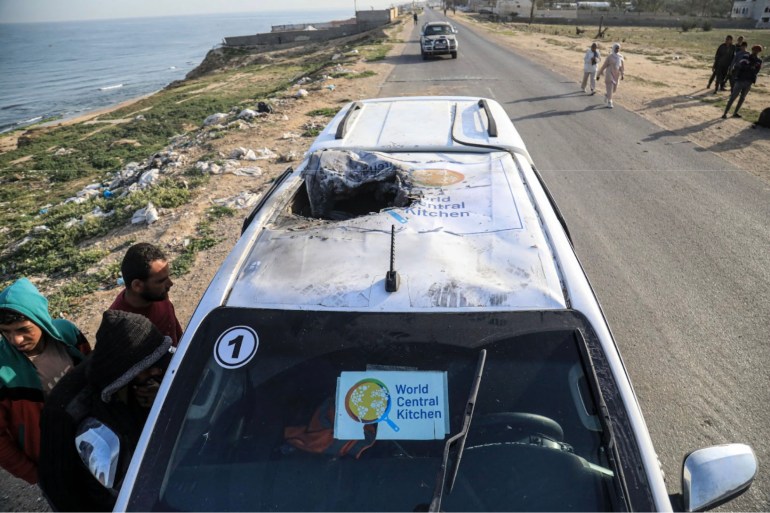
Israel’s plan to ban Al Jazeera ‘unprecedented censorship’, RSF says
Reporters Without Borders (RSF) is calling for a “repeal” of the newly adopted Israeli law that paves the way for a ban on Al Jazeera and other foreign news networks.
In a statement, RSF said the new law “above all targets Al Jazeera”.
“Israel is using every possible method to try to silence Al Jazeera for its coverage of the reality of the fate of Palestinians” in the occupied West Bank and Gaza since October 7, Jonathan Dagher, the head of RSF’s Middle East desk, said.
The group said Israel has killed at least 103 journalists in Gaza – at least three worked for the Doha-based network.
“Israel already inflicted terrible losses on Al Jazeera before 7 October,” it added, referring to the killing of veteran Al Jazeera journalist Shireen Abu Akleh by Israeli forces in May 2022.
#Israel : RSF calls for the repeal of the law passed by the Knesset on 01/04 banning the broadcasting of certain foreign media, which targets @AlJazeera . This censorship of one of the last international media that can report from Gaza is unacceptable.👇 https://t.co/GuKXxqpPBP — RSF (@RSF_inter) April 2, 2024
Israel’s killing of aid workers comes as Gaza suffers ‘man made famine’
We’ve been reporting all day on an Israeli attack that killed seven people working with the United States-based NGO World Central Kitchen in the Gaza Strip.
This attack is only the latest by the Israeli army on humanitarian workers and the aid they labour to distribute, and throughout its war on Gaza it has been accused by governments, the UN and major NGOs of deliberately blocking aid at the borders of the besieged enclave.
UN Secretary-General Antonio Guterres said that the deaths World Central Kitchen staff brings the number of aid workers killed in Gaza since October 7 to 196.
A recent feature of Israel’s war has been attacks on Palestinians seeking aid , specifically in north Gaza, which have killed dozens and wounded hundreds, including members of a committee of local tribal officials who were organising the distribution of aid and were in contact with the Israeli army.
Under these harsh restrictions and constant attacks, Gaza is teetering on the brink of famine, and nowhere is the situation more serious than in northern Gaza, according to a recent UN-backed report issued last month by the world’s hunger monitor, the Integrated Food Security Phase Classification (IPC).
As Philippe Lazzarini, director of the UN’s Palestinian refugee agency, puts it, this famine in Gaza is entirely “man made”, and requires “a complete reversal in policies from the Israeli Government”. The consensus of world humanitarian organisations, including Lazzarini’s, is that all of the Gaza Strip’s border crossings need to be opened to allow through the thousands of aid trucks waiting, and an immediate ceasefire is required to prevent what could be the worst humanitarian disaster of this already catastrophic war.
It is a huge challenge to reverse a man made famine in #Gaza in the absence of a political will. The killing of humanitarian workers yesterday and the denial of @UNRWA to join convoys to the north, including to Al Shifa Hospital today, require a complete reversal in policies… — Philippe Lazzarini (@UNLazzarini) April 2, 2024
No evidence Israel hit aid workers deliberately: White House
The United States is “outraged” over the attack that killed seven World Central Kitchen aid workers – one of them a US citizen – in Gaza, White House spokesman John Kirby has said.
“We were outraged to learn of an [Israeli military] strike that killed a number of civilian humanitarian workers yesterday from the World Central Kitchen,” Kirby said.
But the White House said there is no evidence that Israel struck the aid workers deliberately, despite the fact that a full Israeli investigation is still pending.
‘This is unconscionable’: UN chief
The secretary-general of the UN has said that the “devastating Israeli airstrikes that killed World Central Kitchen personnel yesterday bring the number of aid workers killed in this conflict to 196”.
This includes more than 175 members of UN staff.
“This is unconscionable,” Antonio Guterres said in a post on X.
UAE pauses aid to Gaza by sea after Israeli strike kills aid workers: Report
The United Arab Emirates is pausing humanitarian aid efforts through a maritime corridor from Cyprus to Gaza pending further safety guarantees from Israel and a full investigation into the deaths of aid workers in Gaza, a UAE official has told Reuters.
An Israeli attack killed seven people working for the World Central Kitchen aid group in Gaza.
The UAE has financed the aid shipments by sea to Gaza and WCK has organised them.
A UAE foreign ministry statement condemned the deaths of the aid workers and called for an “urgent, independent and transparent investigation.” The UAE said it holds Israel responsible.
Iran’s FM tells Guterres UNSC must condemn attack on consulate
Iranian Foreign Minister Hossein Amir-Abdollahian said he discussed with UN Secretary-General Antonio Guterres Israel’s attack on Iran’s consulate in Damascus during a phone call.
In a post on the X, Amir-Abdollahian said he demanded an “appropriate and clear response” from the UN Security Council to the “terrorist attack”, and stressed that the responsibility for “maintaining international peace and security lies” with UNSC.

IMAGES
VIDEO
COMMENTS
World War II Newspaper Project Dear Students, Congratulations! You have been selected by President Franklin D. Roosevelt to ... Assignment Requirements Basic Overview You will be responsible for writing 8 articles about America's involvement in World War II. Each of these articles has a specific topic. I have included a list of guiding
Materials Needed: Computers to research newspapers of the time, to type a news story and to lay out the newspaper in Microsoft Word by using the newsletter templates. Steps for Creating a Class Newspaper. Step 1 - Share examples of newspapers from the WWII time period. Students can see how newspapers changed from the beginning of the war till its end at the York town Square site.
PDF. WWII Newspaper Project that allows students to explore one or more theaters of war and a specific time span. Allows for student choice and creativity in this engaging and educational World War II project! Lesson includes detailed instructions, brainstorming and note taking templates, research log, rubric and lesson extension ideas.
Present focus questions for Part 2 of video (20 minutes). 4. Complete K-W-L chart. Assessment: Complete focus questions in paired partners. Other Activity: World War II Newspaper Assignment Using the storyline titles below from the video, students will work in pairs or alone to write a concise 2 to 4 paragraph news story about the event or topic.
N/A. not yet rated. $2.99. Zip. World War Two Newspaper Project! Students will have a blast creating their own newspaper headline page complete with three articles and three pictures about World War Two in World History! Included in each lesson:1. Instructions and Topics for Newspaper 2. Newspaper Template 3.
World War II Newspaper Assignment. Task: You will be given the task of creating a newspaper chronicling the events leading up to and including World War II. You will take on the role of a journalist during the war years. You will be working on this assignment as we work through our World War II unit. Each topic that we cover will have specific ...
Use one of the articles as primary source material for a document-based question (DBQ) assignment. Compare the news coverage with the content in the course textbook. ... In 1945, during World War II, some 30,000 United States Marines landed on the Western Pacific island of Iwo Jima, where they encountered ferocious resistance from Japanese ...
First, iconic images from World War II must be matched with their captions. Then, each image and caption will be placed in order to build a comprehensive timeline of World War II from the Japanese invasion of Manchuria to the start of the Nuremburg Trials. ... Sign up for updates about exhibits, public programming and other news from The ...
This assignment has students creating a Newspaper Article over the following topics from WW2: Pearl Harbor D-Day Anne Frank The Allies Women During the War African Americans During the War The Atomic Bomb Hitler Japanese Internment Camps The Holocaust Any topic from World War II you want to write about but get my approval. Students must use the Who, What, Where, When and Why when writing their ...
Type: Assignment Grade Levels: K-5, 6-8 Desktop Mode Mobile Mode World War 2 newspaper Enter rubric description Poor 2 pts Fair 5 pts Good 10 pts Content quality Writing shows a good appreciation of the key facts and significance of the topic/event chosen. Poor ...
and course of World War II, the character of the war at home and abroad, and its reshaping of the U.S. in world affairs. TIME REQUIREMENT: Two to three class periods, along with time to work outside of class. DIRECTIONS: 1. Explain to students that this activity is related to the people, places, events, and equipment of WWII. 2.
Famous quotes from World War II. "Danger gathers upon our path. We cannot afford—we have no right—to look back. We must look forward.". — British Prime Minister Winston Churchill, December 1936. "Yesterday, December 7, 1941—a date which will live in infamy—the United States of America was suddenly and deliberately attacked by ...
This assignment is a newspaper about the world war 2, and what happened around those times. world war ii morning news september 1944 wwii rages on why the. Skip to document. ... This assignment is a newspaper about the world war 2, and what happene... View more. Subject. World History. 999+ Documents. Students shared 2928 documents in this ...
3) Salute to Service Plaque Project. If you teach US History, it's very likely that your state standards include the ways varied groups contributed to the war effort. The most common include: Women aka Rosie the Riveter. Japanese American Nisei soldiers. African Americans and the Tuskegee Airmen.
Invasion is Under Way: Allied Troops Land in France. Muncie Evening Press (Extra) - June 6, 1944. The Allies today sent their invading forces against Adolf Hitler's occupied Europe. The long-awaited invasion was announced by General Dwight Eisenhower with the promise that the high command would accept nothing short of victory.
U.S. Policy and the Holocaust Refugee Crisis. Analyzing a Writing Assignment by a Teenage Refugee in New York During World War II. The SS Quanza and European War Refugees. Analyzing Einstein's Citizenship Application. Confronting Work Place Discrimination on the World War II Home Front.
World War II was a worldwide conflict that took place from 1939 to 1945, beginning with Germany's invasion of Poland on September 1, 1939. ... ASSIGNMENT. Break students up into groups and have ...
World War II Assignment. U.S. History B. World War II Reading Assignment (2020) SSUSH19 Examine the origins, major developments, and the domestic impact of World War II, including the growth of the federal government. a. Investigate the origins of U.S. involvement in the war including Lend-lease and the Japanese attack on Pearl Harbor. b.
Module 10 Assignment: WWII Propaganda Poster. For this assignment, you will review WWII propaganda posters and create a poster of your own. Step 1: Review the WWII propaganda posters in the National Archives and the FDR Presidential Library and Museum. Be sure to focus on those from World War II. Look for dates or other cues as to the time period.
Unfortunately, increasingly fewer survivors of the World War I era are alive today to directly share their recollections of this historical time. Yet, by delving into the unique resources of Library of Congress and by creating World War I period newspapers of differing perspectives, students can gain an enduring understanding of The Great War.
Federal researchers working in a government lab famed for helping produce the atomic bomb during World War II are now focused on what some see as a new, equally existential threat to humanity ...
The boss of the US bank JP Morgan has warned that the world could be facing the most dangerous moment since the second world war, putting lives and economic growth at risk.
The Israeli military says it has reduced the number of ground troops in the southern Gaza Strip following the conclusion of its monthslong operation in the city of Khan Younis, raising questions ...
AP US History (Sem 2) | Lesson 7.6 Assignment: WWII Newspaper Project Directions: You have been selected by President Franklin D. Roosevelt to create a newspaper that tells the story of America's involvement in World War II. You will be working to tell the story of how America was brought into World War II, how the US prepared for war, how different groups of people provided unique ...
Six months into the war in Gaza, the human cost has been devastating. Israel estimates that about 1,200 people were killed in Hamas's Oct. 7 attack, including more than 300 soldiers, and says ...
A great student-centered lesson and collection of documents to help students analyze both propaganda (posters and video) with a focus on World War Two.Contains a detailed 39 slide PowerPoint (which contains a link to online WW2 era Disney propaganda video, engaging class discussion questions, debates, group critical thinking challenges, and an individual critical thinking challenge assignment).
2 of 10 | . German Army Chief Lt. Gen. Alfons Mais, right, speaks during a media joint conference with Lithuanian Chief of Defence Gen. Valdemaras Rupsys and Lithuanian Defense Minister Laurynas Kasciunas as members of the Headquarters initial command element of the Bundeswehr's 45th Brigade Lithuania arrival by plane at a airport in Vilnius, Lithuania, Monday, April 8, 2024.
Israel-Gaza war. The Israel-Gaza war has gone on for six months, and tensions have spilled into the surrounding region.. The war: On Oct. 7, Hamas militants launched an unprecedented cross-border ...
Israel's war on Gaza updates: Aid workers killed amid 'man-made famine' 'Indiscriminate killing' of Gaza aid workers condemned worldwide as Israel says it launched an immediate 'high ...